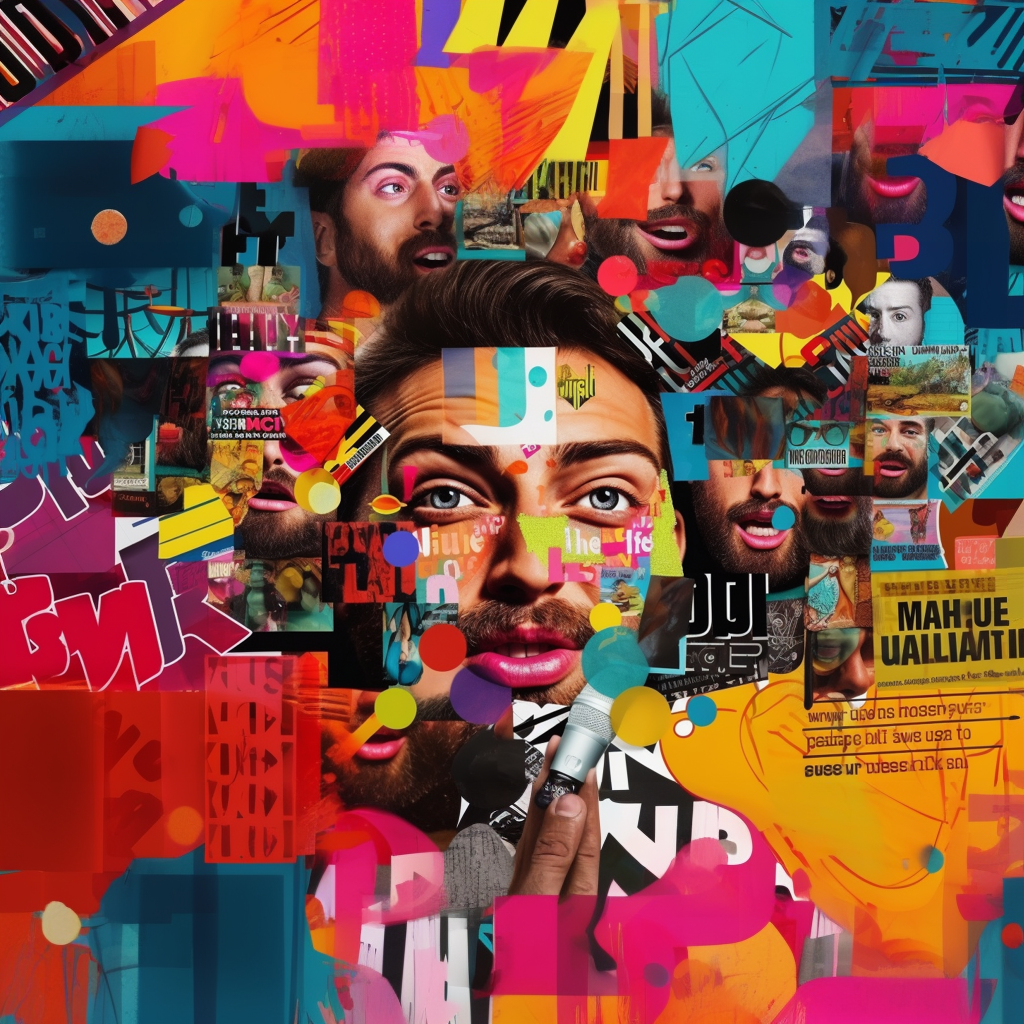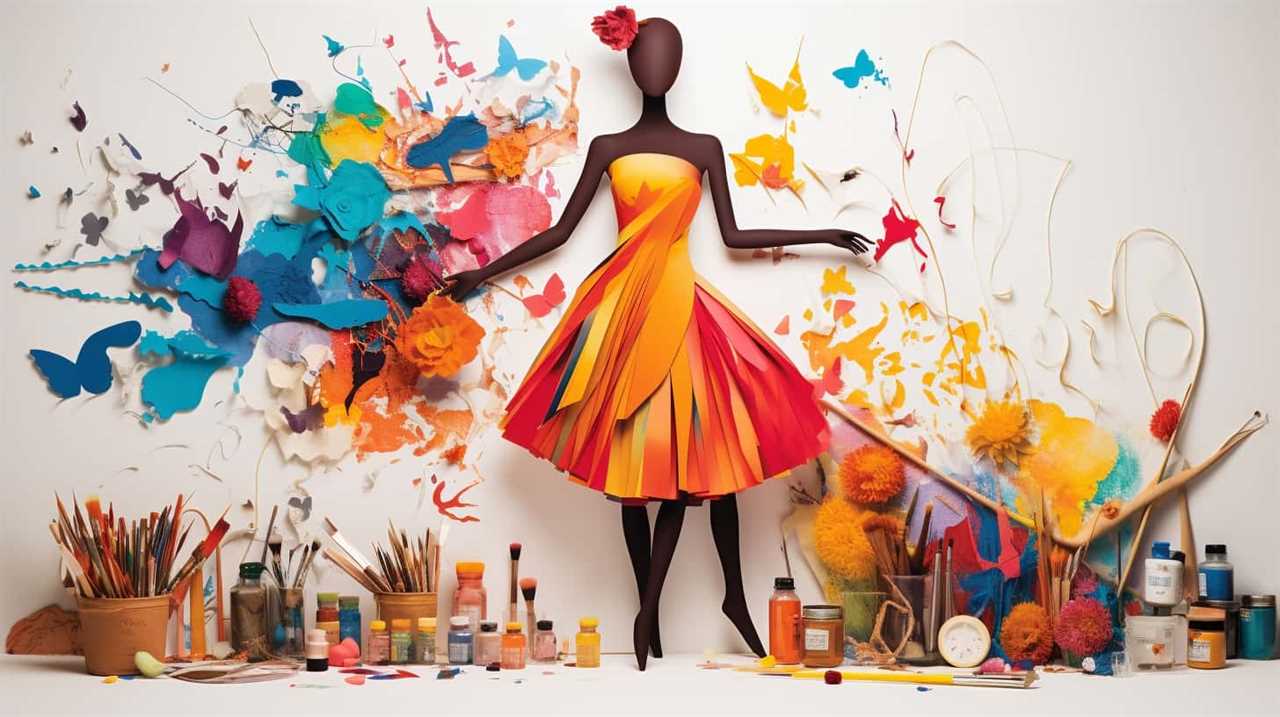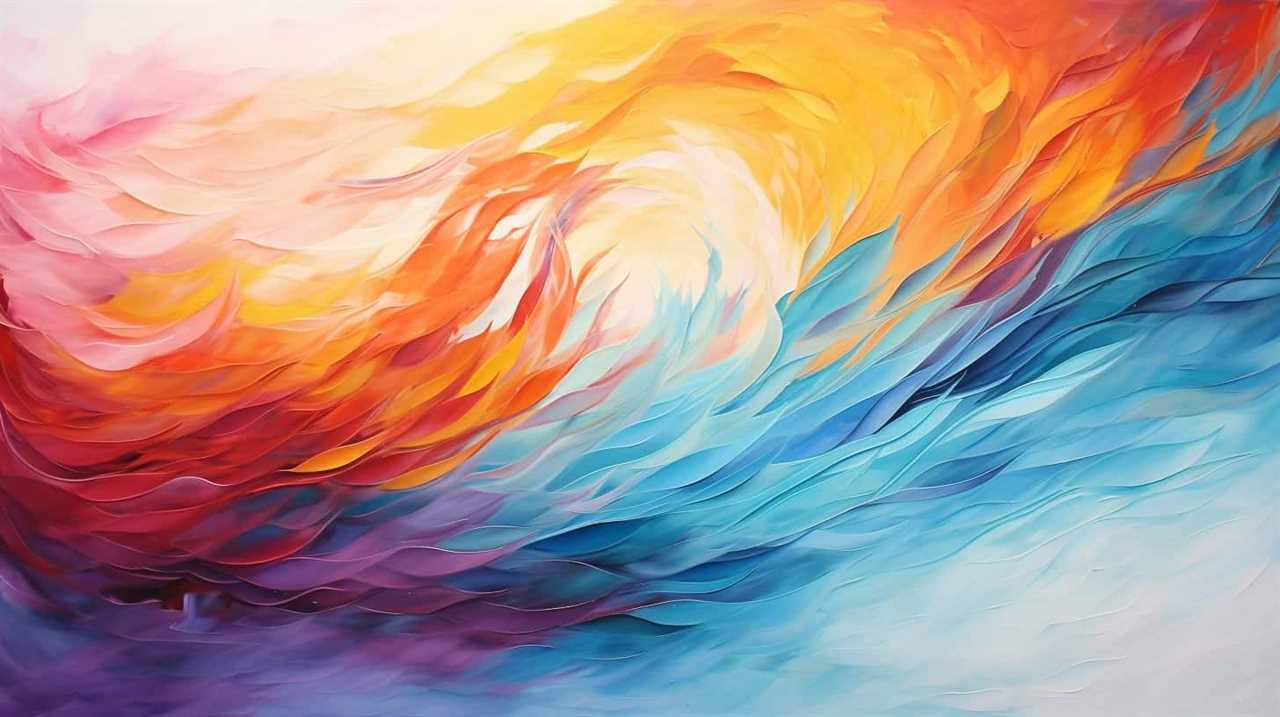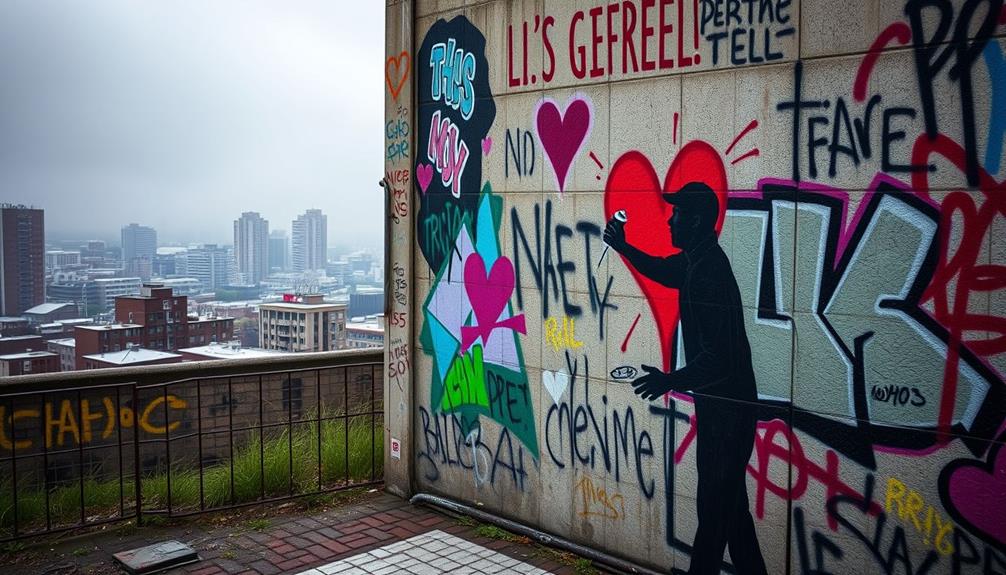Are you looking for innovative ways to improve your personal growth?
Did you know that engaging in artistic expression can have a profound impact on your personal development? According to recent studies, 85% of individuals who incorporate art into their lives experience increased self-awareness and a sense of fulfillment.
In this guide, we will explore six tips to help you harness the power of creativity and enhance your journey of self-discovery.
From embracing different art forms to overcoming fear and inhibitions, each tip is designed to inspire you to step out of your comfort zone and tap into your inner artist.
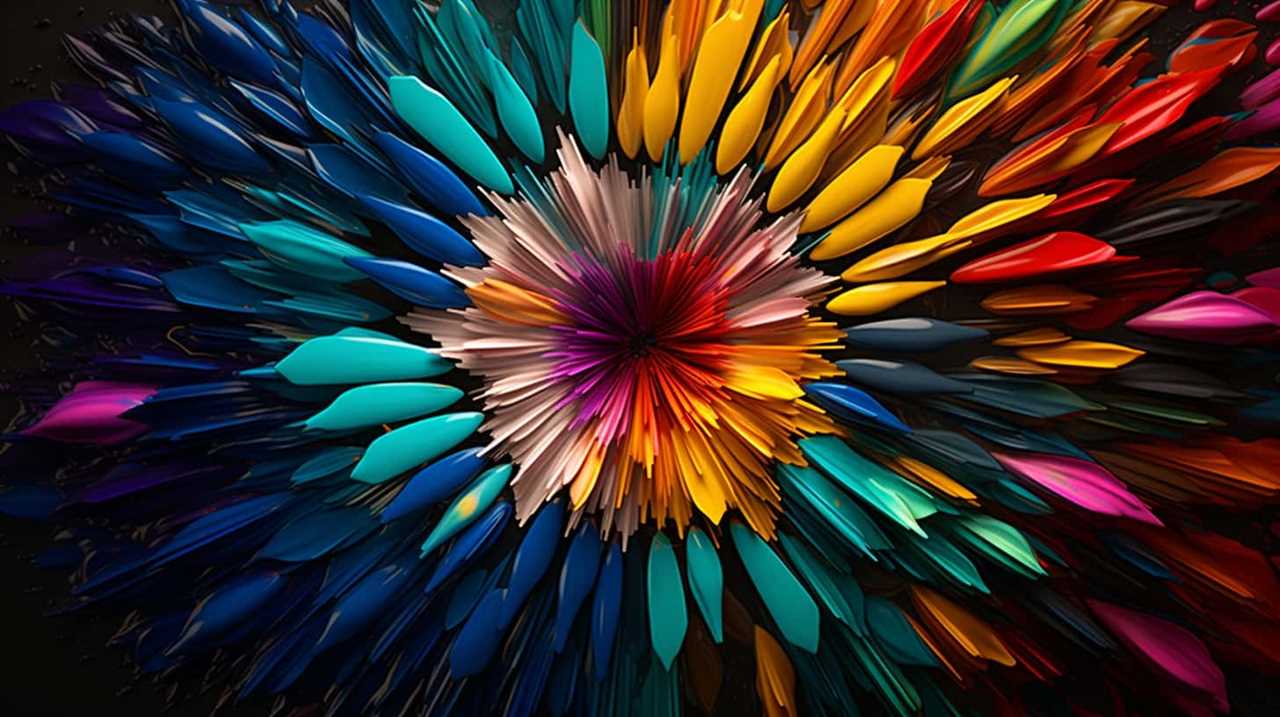
So, let’s dive in and discover how artistic expression can propel your personal growth to new heights!
Key Takeaways
- Artistic expression allows for self-awareness and understanding.
- Engaging in artistic activities fosters mindfulness and a sense of calm.
- Art can be a form of communication when words fail.
- Embracing self-expression through art promotes self-acceptance and personal growth.
Understanding the Power of Creativity
Understanding the power of creativity can be achieved by embracing the diverse ways in which artistic expression contributes to personal growth. It’s through harnessing your creative potential that you unlock a world of possibilities. Art has the ability to tap into emotions, thoughts, and experiences that often go unnoticed in our daily lives. By engaging in artistic endeavors, you cultivate self-awareness, gaining a deeper understanding of yourself and your place in the world.
Art provides a safe space for exploration and self-reflection. Through various mediums such as painting, writing, or dancing, you can express your innermost thoughts and feelings. This process of self-expression allows you to confront and process emotions that may be difficult to articulate in other ways. As you create, you gain insight into your own strengths, weaknesses, and desires, leading to personal growth and self-discovery.
Embracing Art as a Tool for Personal Growth
Embrace art as a powerful tool for personal growth by actively engaging in creative expression. Art has the ability to unlock emotions, facilitate self-discovery, and promote personal development. Through art, you can tap into your inner thoughts and feelings, allowing for a deeper understanding of yourself and the world around you.

Art therapy benefits are well-documented, as it provides a safe and non-judgmental space for self-expression. It allows you to explore your innermost thoughts and feelings, making sense of them through visual representation. Art can act as a form of communication when words fail, allowing you to express yourself in ways that are both cathartic and healing.
To fully embrace art as a tool for personal growth, consider incorporating it into your daily routine. Set aside time for creative activities such as painting, drawing, or writing in a journal. Allow yourself to experiment and explore different mediums, styles, and techniques.
To help you get started on your artistic journey, here is a table showcasing different ways you can embrace art as a tool for personal growth:
| Ways to Embrace Art for Personal Growth |
|---|
| Attend art therapy sessions |
| Create a visual journal |
| Participate in art workshops |
| Use art as a form of meditation |
Exploring Different Art Forms for Self-Expression
Discover various art forms that can be utilized for self-expression and personal growth. When it comes to self-expression, there are countless art forms to explore. From painting and sculpture to photography and dance, each art form offers a unique way to express yourself and tap into your inner creativity.

Painting, for example, allows you to use colors and brush strokes to convey emotions and thoughts. Sculpture, on the other hand, lets you shape and mold materials to create three-dimensional representations of your ideas. Photography captures moments and tells stories through the lens of a camera, while dance combines movement and music to express emotions and narratives.
By trying out different art forms, you can discover which ones resonate with you the most and allow you to express yourself in ways you never thought possible. Experiment with different techniques and styles within each art form to find your own unique voice. Don’t be afraid to push the boundaries and try something new.
Overcoming Fear and Inhibitions Through Art
To overcome fear and inhibitions, start by stepping outside your comfort zone and embracing artistic expression. It’s natural to feel stage fright or self-doubt when it comes to sharing your creative work with others. But remember, art is meant to be a form of self-expression, and it has the power to push you beyond your limitations.
Confronting stage fright can be daunting, but it’s important to remember that everyone starts somewhere. Take small steps to gradually expose yourself to performing in front of others. Start with a supportive audience, like friends or family, and gradually work your way up to larger audiences. Embrace the nerves and use them to fuel your performance, knowing that every artist has experienced the same jitters at some point.

Self-doubt can be a major roadblock to artistic expression, but it’s important to remember that art is subjective. What matters most is that you’re expressing yourself authentically. Push yourself to create without judgment or comparison. Embrace your unique perspective and let go of the fear of not being good enough. Remember, art is about growth and self-expression, not perfection.
Cultivating Mindfulness Through Artistic Activities
Are you looking for a way to cultivate mindfulness in your life? Consider incorporating artistic activities into your daily routine.
The connection between art and mindfulness is powerful, as engaging in creative expression allows you to fully immerse yourself in the present moment.
Art and Mindfulness Connection
Engage in artistic activities to cultivate mindfulness and enhance self-growth. Art has a profound connection with mindfulness, allowing you to find peace and clarity in the present moment. Through art, you can relieve stress and engage in self-reflection, nurturing your inner self and promoting personal growth.
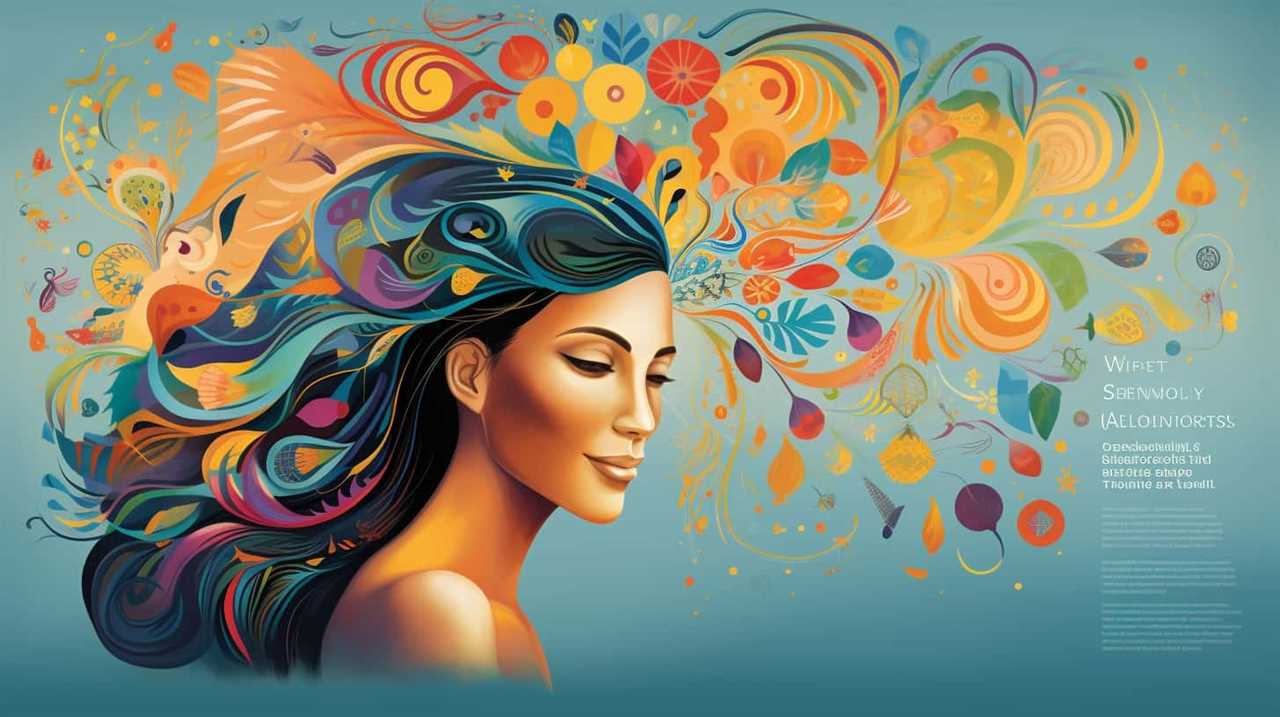
Incorporating artistic expression into your daily life can help you tap into your creative potential, fostering innovation and originality. Whether it’s painting, drawing, sculpting, or any other form of art, it provides a channel for self-expression and self-discovery. Artistic activities enable you to slow down, focus on the process, and immerse yourself in the present, fostering a sense of mindfulness.
To highlight the benefits of art and mindfulness, take a look at the table below:
| Artistic Activities | Mindfulness Benefits |
|---|---|
| Painting | Promotes relaxation |
| Drawing | Enhances self-awareness |
| Sculpting | Encourages focus |
| Photography | Cultivates gratitude |
| Writing | Stimulates creativity |
Benefits of Artistic Mindfulness
You can cultivate mindfulness and experience the benefits of artistic mindfulness through engaging in various artistic activities.
Mindful art techniques, such as painting, drawing, or sculpting, allow you to immerse yourself in the present moment and connect with your inner self. Art becomes a form of meditation, as you focus on the process rather than the end result.
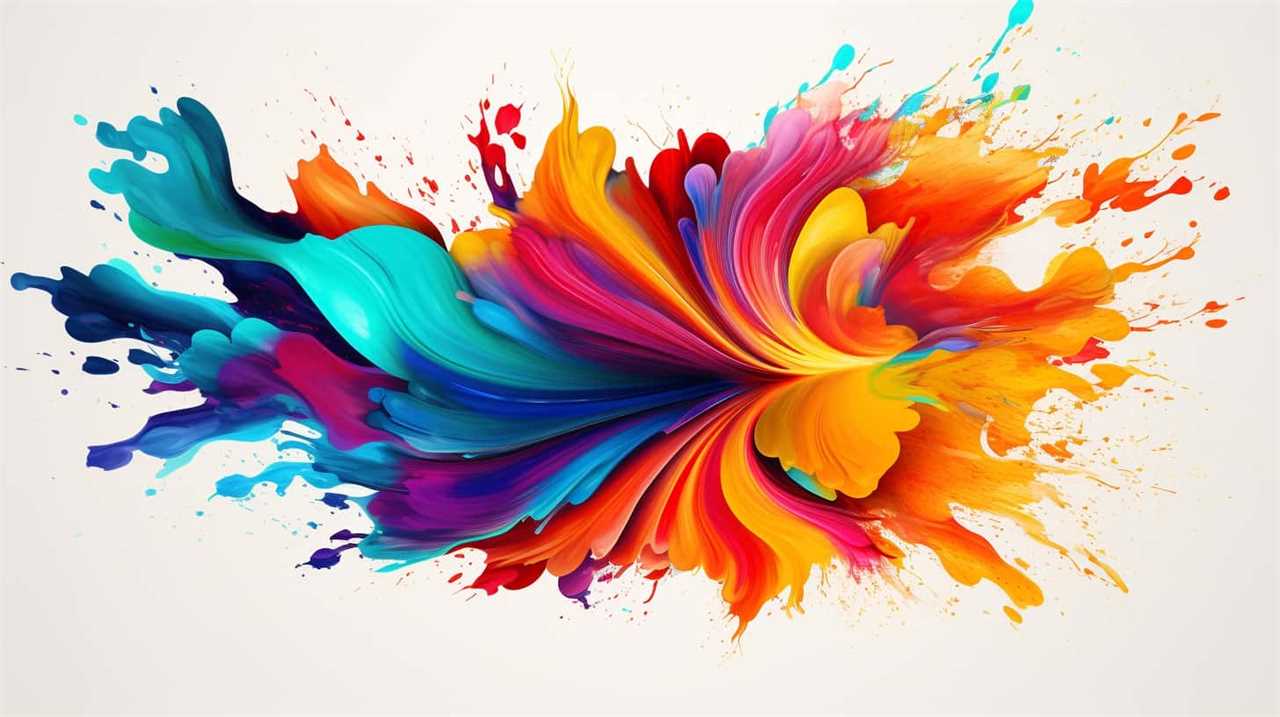
It provides a space for self-expression, self-reflection, and self-discovery. Through art, you can tap into your creativity, release stress, and enhance your overall well-being.
Artistic mindfulness allows you to let go of judgment and perfectionism, embracing the imperfections and embracing the beauty of the process. By engaging in artistic activities, you can cultivate a deeper sense of awareness, presence, and mindfulness in your daily life.
Finding Inspiration in Everyday Life
Discovering inspiration in your daily experiences can greatly enhance your artistic expression and personal growth. The world around you is filled with countless opportunities for finding inspiration and fueling your creative process. By engaging in artistic exploration and observing the beauty in everyday life, you can unlock a wealth of ideas and perspectives that can elevate your artwork to new heights.
To help you tap into the inspiration that surrounds you, here is a visual representation of three key sources of inspiration in everyday life:
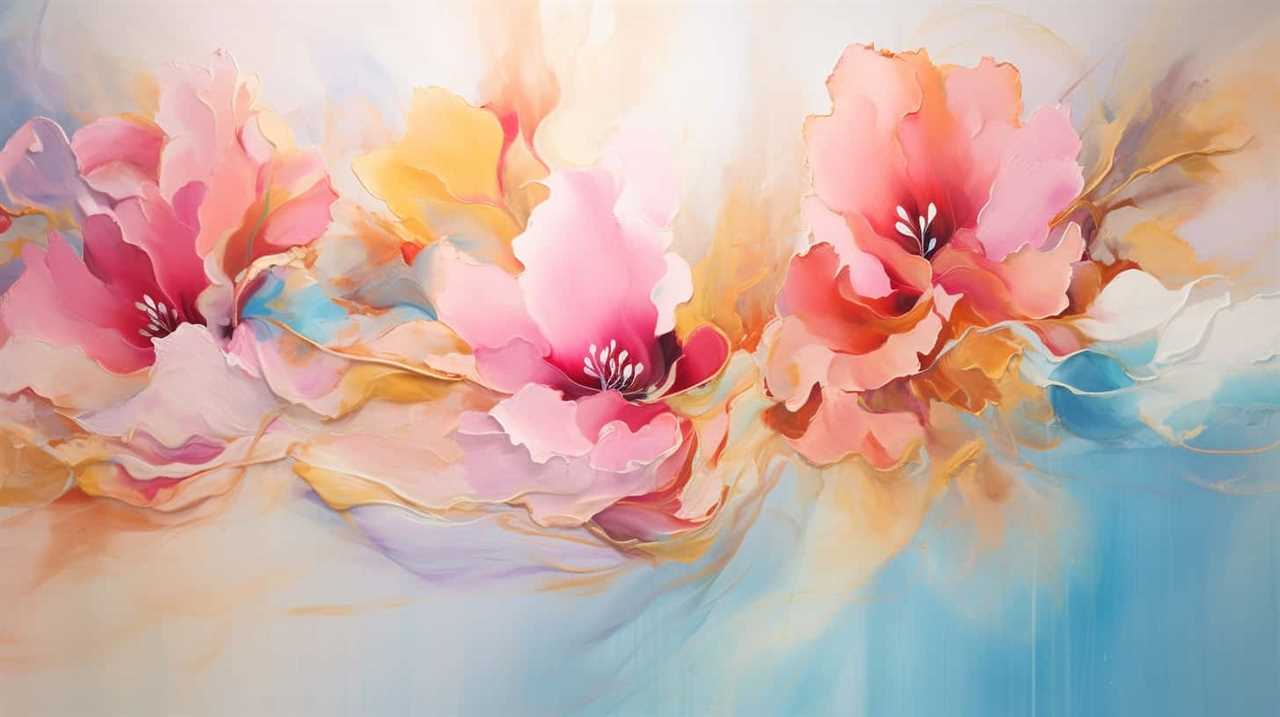
| Nature | Emotions | Interactions |
|---|---|---|
| The ever-changing landscapes, vibrant colors, and intricate patterns found in nature can provide endless inspiration for your artwork. | Emotions are a powerful source of creative energy. By exploring your own feelings and those of others, you can infuse your art with depth and meaning. | The interactions you have with people, whether it’s a heartfelt conversation or a fleeting encounter, can spark inspiration and give you new perspectives to explore. |
By being mindful and observant, you can find inspiration in even the most ordinary moments. Whether it’s a walk in the park, a conversation with a loved one, or the emotions that arise from a personal experience, each day presents opportunities for artistic growth.
Transitioning into the next section about ‘using art as a therapeutic outlet’, you can harness the inspiration you find in everyday life to not only create art but also to heal and grow on a personal level.
Using Art as a Therapeutic Outlet
How can art serve as a therapeutic outlet for personal growth? When it comes to healing through creativity, art therapy benefits individuals in profound ways. Here are three ways art can be a powerful tool for self-expression and personal growth:
- Emotional Release: Art allows you to express and process emotions that may be difficult to put into words. Through painting, drawing, or other forms of artistic expression, you can release pent-up emotions and gain a sense of relief and catharsis. It provides a safe space to explore and confront your feelings, leading to emotional healing and growth.
- Self-Exploration: Engaging in art can help you gain a deeper understanding of yourself. It encourages introspection and self-reflection, allowing you to explore your thoughts, beliefs, and experiences. By creating art, you can uncover hidden aspects of yourself and gain insights into your personal journey, leading to increased self-awareness and personal growth.
- Empowerment and Resilience: Artistic expression can empower you to overcome challenges and build resilience. It allows you to transform pain, trauma, or difficult experiences into something meaningful and beautiful. Creating art can give you a sense of control and agency, helping you to reclaim your narrative and find strength in your own unique story.
Through art, you can tap into your inner creativity and use it as a therapeutic outlet for personal growth. It provides a powerful means of self-expression, emotional release, self-exploration, and empowerment. Embrace the healing potential of art and embark on a transformative journey of self-discovery and growth.
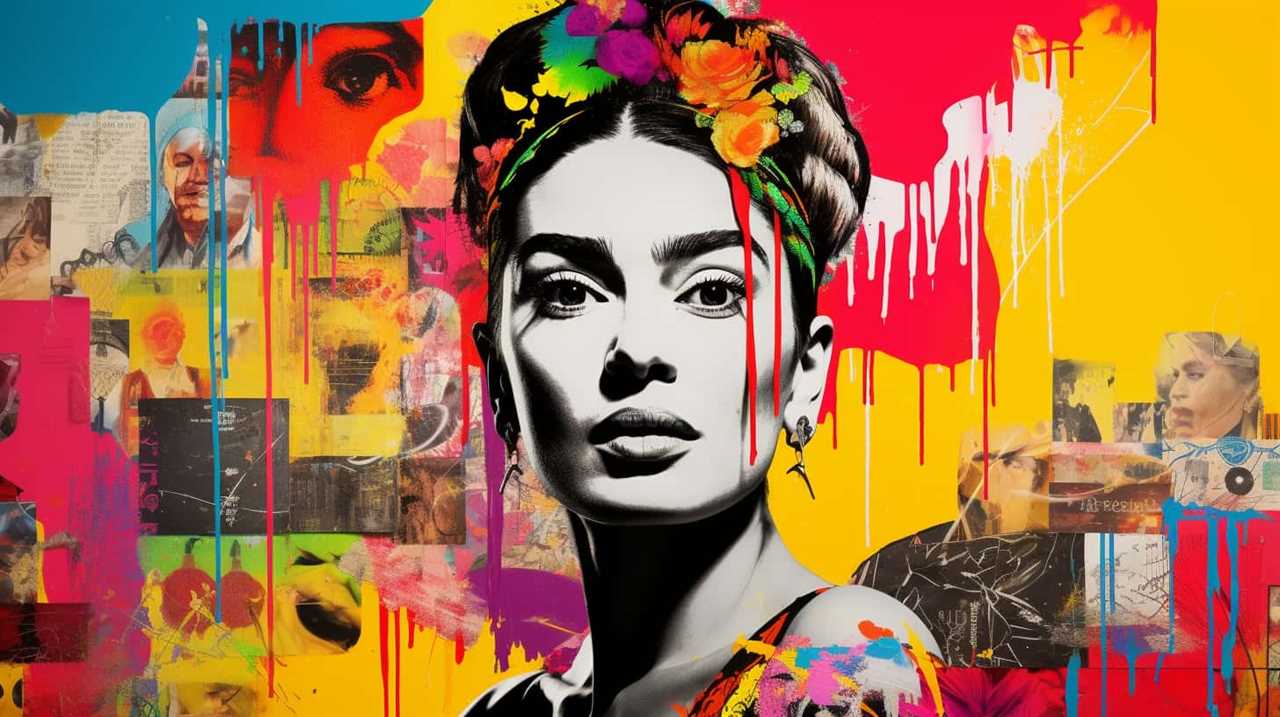
Unlocking Self-Discovery Through Creative Expression
Tap into your inner creativity and unlock a world of self-discovery through artistic expression. Whether it’s through dance or writing, self-expression can be a powerful tool for uncovering hidden truths about yourself.
Dance allows you to move your body freely, expressing emotions and thoughts that may be difficult to put into words. It allows you to explore different movements and rhythms, connecting with your body on a deeper level. As you dance, you may discover new aspects of your personality and gain a deeper understanding of your emotions.
Writing, on the other hand, provides a therapeutic outlet for self-reflection. By putting your thoughts and feelings onto paper, you can gain clarity and insight into your own experiences. Writing allows you to process and make sense of your emotions, helping you to better understand yourself. It can also serve as a form of release, allowing you to let go of pent-up emotions and find healing in the process.
Both dance and writing offer a unique opportunity for self-discovery. They allow you to tap into your innermost thoughts and emotions, providing a safe space for exploration and growth. So, whether you choose to express yourself through dance or writing, embrace the journey of self-discovery that awaits you.

Harnessing the Healing Effects of Art
Experience the transformative power of art as you harness its healing effects for personal growth. Art has long been recognized as a powerful tool for healing and self-discovery. Through various art therapy techniques, you can tap into the healing potential of art and find solace, understanding, and growth.
- Expressive Art: Engage in expressive art forms such as painting, drawing, or sculpting to release pent-up emotions and delve into your subconscious mind. The act of creating art allows you to express your thoughts, feelings, and experiences in a non-verbal and cathartic way, promoting emotional healing and self-reflection.
- Mindfulness Art: Practice mindfulness through art by immersing yourself in the process of creating without judgment or attachment to the outcome. Focus on the present moment, observe your thoughts and emotions as they arise, and let them flow onto the canvas. This mindful art-making can reduce stress, increase self-awareness, and promote a sense of inner peace.
- Narrative Art: Use art as a storytelling medium to explore and make sense of your personal narratives. Create visual narratives that reflect your life experiences, challenges, and triumphs. By externalizing your stories through art, you can gain new perspectives, process unresolved emotions, and find empowerment in rewriting your narrative.
Harnessing the healing effects of art is a deeply personal and introspective journey. Through art, you can tap into your inner world, heal emotional wounds, and foster personal growth. Embrace the innovative power of art and allow it to guide you on your path towards self-discovery and healing.
Nurturing Self-Confidence Through Art
To nurture self-confidence through art, begin by embracing the power of self-expression. Artistic endeavors can be a powerful tool for building self-esteem and boosting self-worth. When you engage in creative activities, you tap into your unique abilities and talents, allowing yourself to shine. Art offers a safe space for exploration and experimentation, where you can freely express your thoughts, emotions, and ideas without fear of judgment. Through art, you can discover new strengths and gain a deeper understanding of yourself.
One way to nurture self-confidence through art is by setting goals and challenging yourself to try new techniques or styles. Pushing yourself out of your comfort zone can lead to personal growth and a sense of accomplishment. Remember, it’s not about comparing yourself to others, but rather about embracing your own progress and celebrating your individuality.
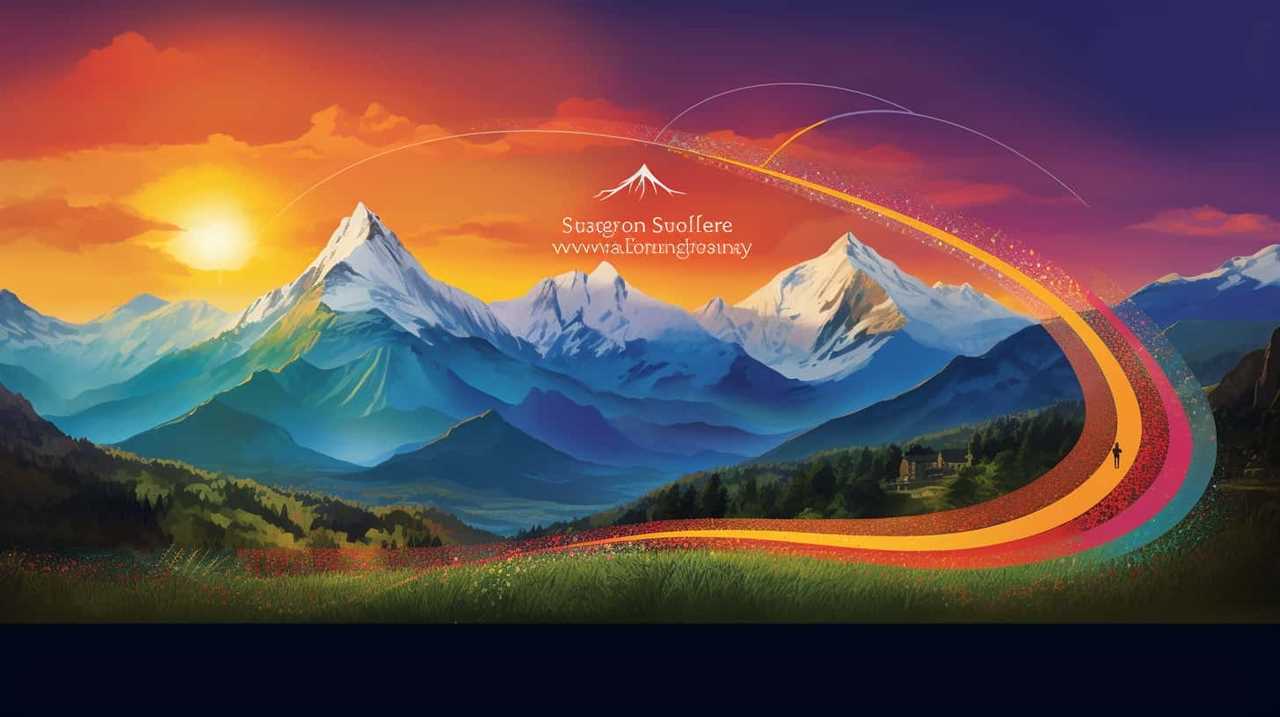
Additionally, surrounding yourself with a supportive community can greatly enhance your self-confidence. Joining art classes or workshops allows you to connect with like-minded individuals who share your passion for creativity. Not only can you learn from others, but also gain encouragement and validation for your artistic journey.
Here is a table to emphasize the importance of nurturing self-confidence through art:
| Benefits of Nurturing Self-Confidence Through Art |
|---|
| Building self-esteem |
| Boosting self-worth |
| Encouraging personal growth |
| Fostering self-acceptance |
| Cultivating resilience |
Enhancing Emotional Intelligence Through Artistic Endeavors
To enhance your emotional intelligence through artistic endeavors, focus on exploring the connection between your creative expression and your inner emotions. Art has the power to tap into the depths of your emotions and provide a platform for self-reflection. By engaging in artistic activities, you can cultivate emotional well-being and gain a deeper understanding of your own feelings.
Here are three ways to enhance your emotional intelligence through art:

- Expressive Painting: Grab a canvas and let your emotions guide your brush strokes. Use colors, shapes, and textures to represent your innermost thoughts and feelings. Allow yourself to freely express and release any pent-up emotions through your artwork.
- Creative Writing: Write in a journal or create poetry that reflects your emotions. Explore different writing techniques and styles to capture the essence of your feelings. Through writing, you can gain clarity and insight into your emotional experiences.
- Dance and Movement: Use your body as a means of expressing your emotions. Engage in dance or movement exercises that allow you to physically embody your feelings. The rhythmic flow of movement can help you connect with your emotions on a deeper level.
By engaging in these artistic endeavors, you can enhance your emotional intelligence and promote your overall well-being.
Now, let’s explore how building resilience and adaptability through creativity can further support your personal growth.
Building Resilience and Adaptability Through Creativity
Are you looking for ways to build resilience and adaptability in your life?
By engaging in artistic expression, you can’t only find an emotional outlet but also develop creative problem-solving skills.
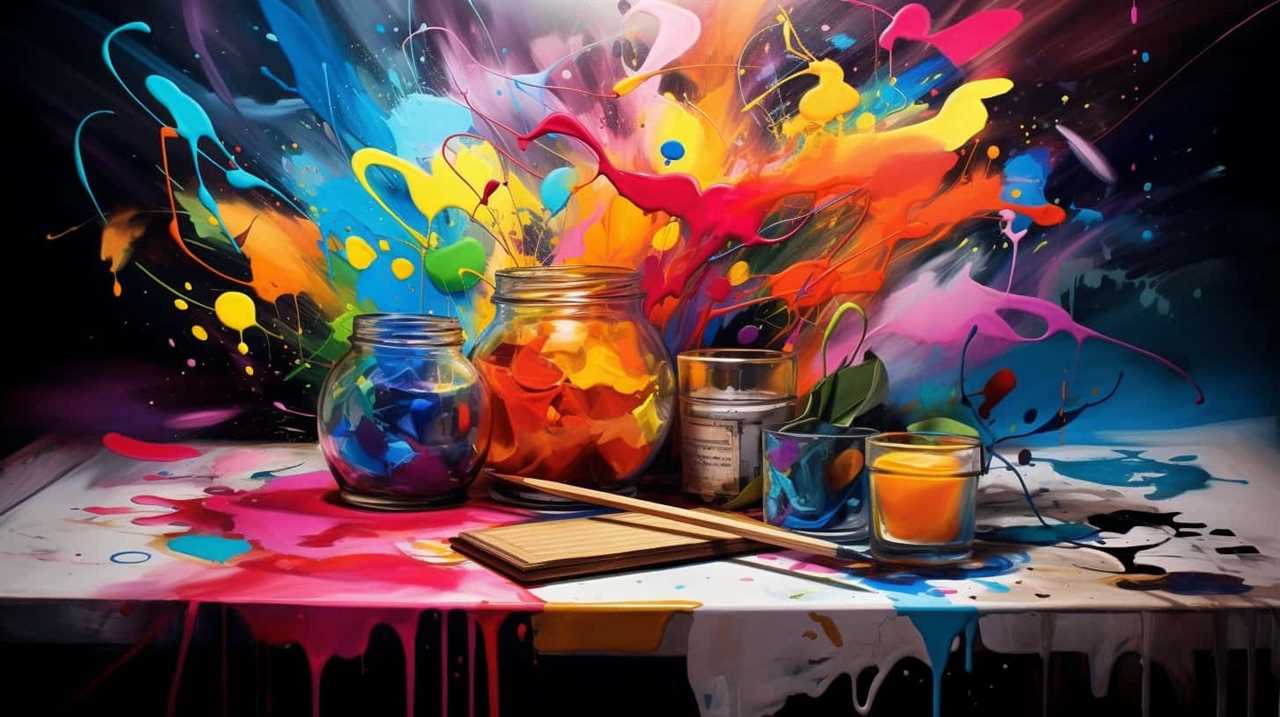
Art allows you to explore different perspectives, think outside the box, and adapt to new challenges with an open mind.
Art as Emotional Outlet
Immerse yourself in the power of artistic expression to cultivate resilience and adaptability, using creativity as a transformative emotional outlet. Art has long been recognized as a therapy for healing and personal growth. By engaging in art therapy techniques, you can tap into your inner emotions and express them in a creative and meaningful way.
Here are three ways art can serve as an emotional outlet:
- Self-Reflection: Through art, you can explore your thoughts and feelings, gaining a deeper understanding of yourself and your emotions. This self-reflection allows you to process and release negative emotions, fostering resilience and adaptability.
- Emotional Release: Art provides a safe space to express and release pent-up emotions. Whether it’s painting, drawing, or sculpting, the act of creating allows you to externalize your emotions and find solace in the process.
- Empowerment: Artistic expression empowers you to take control of your emotions and transform them into something beautiful. By channeling your emotions into a creative outlet, you can shift your perspective and find strength in your ability to adapt and grow.
Incorporating art as an emotional outlet can enhance your resilience and adaptability, helping you navigate life’s challenges with creativity and grace. Embrace the power of artistic expression and unlock your potential for self-growth.
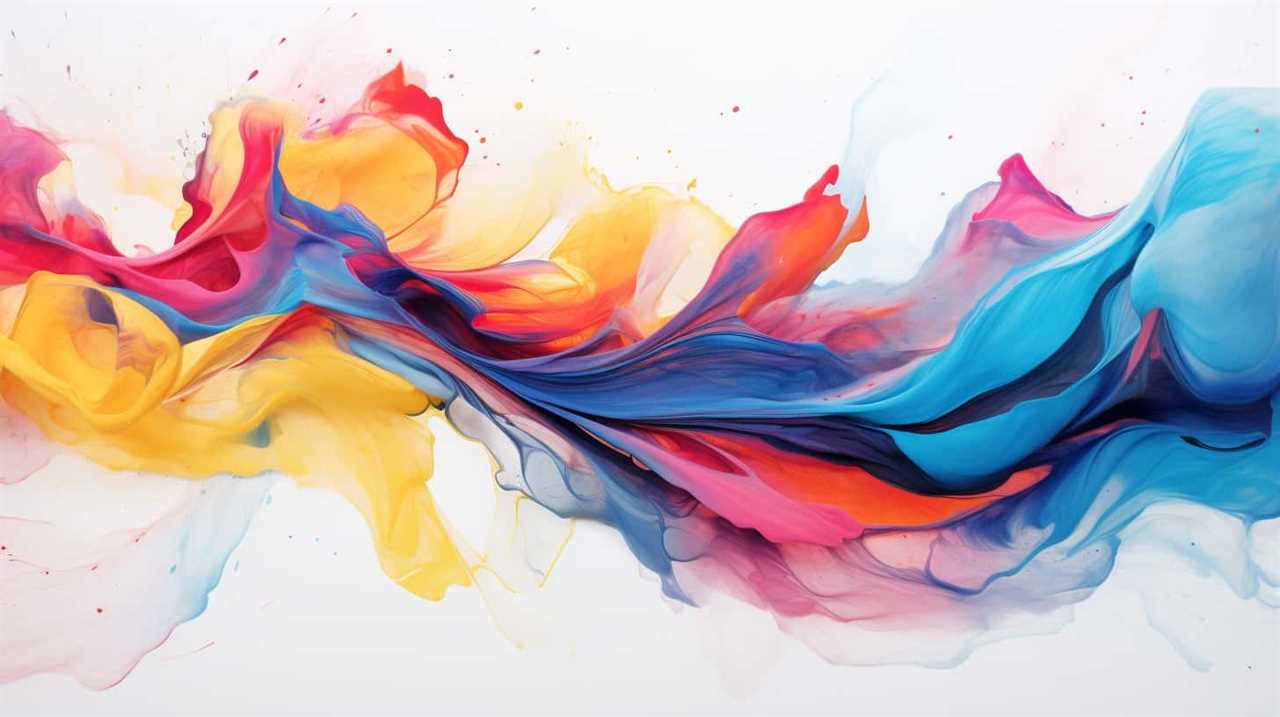
Creative Problem-Solving Skills
By harnessing the power of creativity, you can develop creative problem-solving skills that build resilience and adaptability. Artistic exploration provides a unique avenue for cultivating these skills, allowing you to think outside the box and approach challenges with a fresh perspective.
Through creative problem solving, you learn to embrace uncertainty and find innovative solutions. It involves breaking down complex problems into manageable parts, brainstorming ideas, and experimenting with different approaches. This process fosters resilience by teaching you to adapt and pivot when faced with obstacles or setbacks.
To further illustrate the benefits of creative problem solving, consider the following table:
| Creative Problem-Solving Skills | Benefits |
|---|---|
| Flexible thinking | Enables you to adapt to changing circumstances and find alternative solutions |
| Risk-taking | Encourages boldness and the willingness to embrace new ideas |
| Collaboration | Enhances teamwork and fosters diverse perspectives |
| Iterative approach | Allows for continuous improvement and refinement of ideas |
Fostering Personal Growth Through Artistic Challenges
To foster personal growth through artistic challenges, you can actively engage in creative pursuits that push you out of your comfort zone. Here are three ways to embrace these challenges and unlock your true potential:
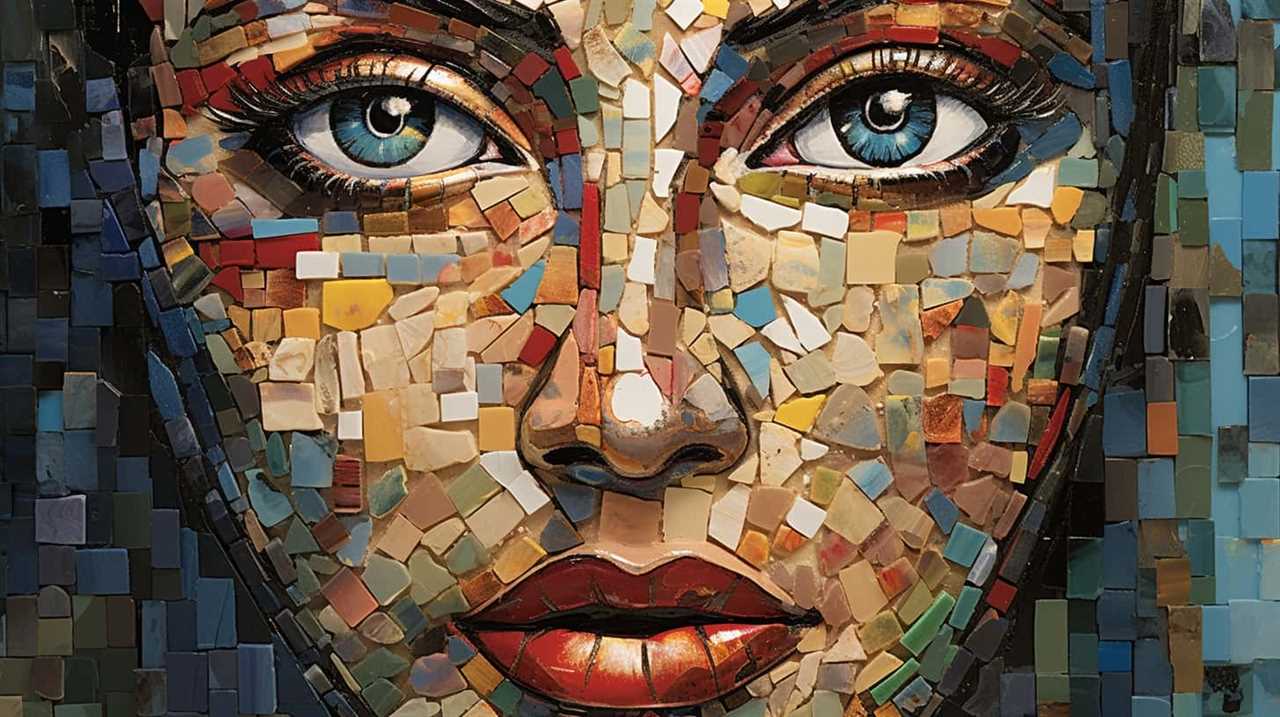
- Embrace experimentation: Step outside of your usual artistic techniques and explore new mediums and styles. By pushing yourself to try new things, you open up a world of possibilities and foster creativity in unexpected ways. Allow yourself to make mistakes and learn from them, embracing the process of growth and exploration.
- Set ambitious goals: Challenge yourself to take on projects that require you to stretch your artistic abilities. Whether it’s creating a large-scale mural, writing a novel, or choreographing a dance routine, setting ambitious goals pushes you to develop new skills and expand your artistic horizons. It may be intimidating at first, but the sense of accomplishment and personal growth that comes from achieving these goals is truly rewarding.
- Seek feedback and collaboration: Surround yourself with a supportive community of artists who can provide constructive criticism and inspire you to push your boundaries. Collaborating with others not only exposes you to different perspectives and techniques but also allows you to learn from their experiences. By embracing feedback and collaboration, you foster personal growth and create meaningful connections with fellow artists.
As you actively engage in these artistic challenges, you’ll discover new facets of yourself and unlock hidden potential. This newfound growth and self-awareness will seamlessly integrate into your self-care practices, enhancing your overall well-being.
Integrating Art and Self-Care Practices for Well-being
Are you looking for ways to enhance your well-being through art?
Art can be a powerful form of self-expression, allowing you to convey your emotions and experiences in a creative way.
By integrating art into your self-care practices, you can reap the benefits of engaging in a creative outlet, such as reduced stress, increased self-awareness, and improved mental health.

Consider exploring art therapy techniques, such as painting, drawing, or collage, to further enhance your well-being and nurture your personal growth.
Art as Self-Expression
When integrating art and self-care practices for well-being, you can enhance your self-expression through artistic means. Art has the power to tap into your innermost thoughts, emotions, and experiences, allowing you to express yourself in unique and profound ways. Here are three ways in which art can be used as a powerful tool for self-expression:
- Art therapy techniques: Art therapy combines the benefits of creative outlets with therapeutic techniques to promote healing and self-discovery. Through various art forms like painting, drawing, or sculpting, you can delve deep into your subconscious and express your thoughts and emotions visually.
- Benefits of creative outlets: Engaging in creative activities such as writing, dancing, or playing a musical instrument can provide a cathartic release and allow you to communicate your feelings without words. It can be a form of self-care that nurtures your mind, body, and soul.
- Mindful art practices: Incorporating mindfulness into your artistic endeavors can help you stay present in the moment and fully immerse yourself in the creative process. This allows for a deeper connection with your inner self and promotes self-expression that’s authentic and meaningful.
Benefits of Creative Outlets
How can engaging in creative outlets enhance your well-being and self-growth?
By incorporating art therapy into your self-care practices, you can experience a multitude of benefits. Artistic expression not only provides a means of self-discovery and self-expression, but it also promotes emotional healing and stress relief.
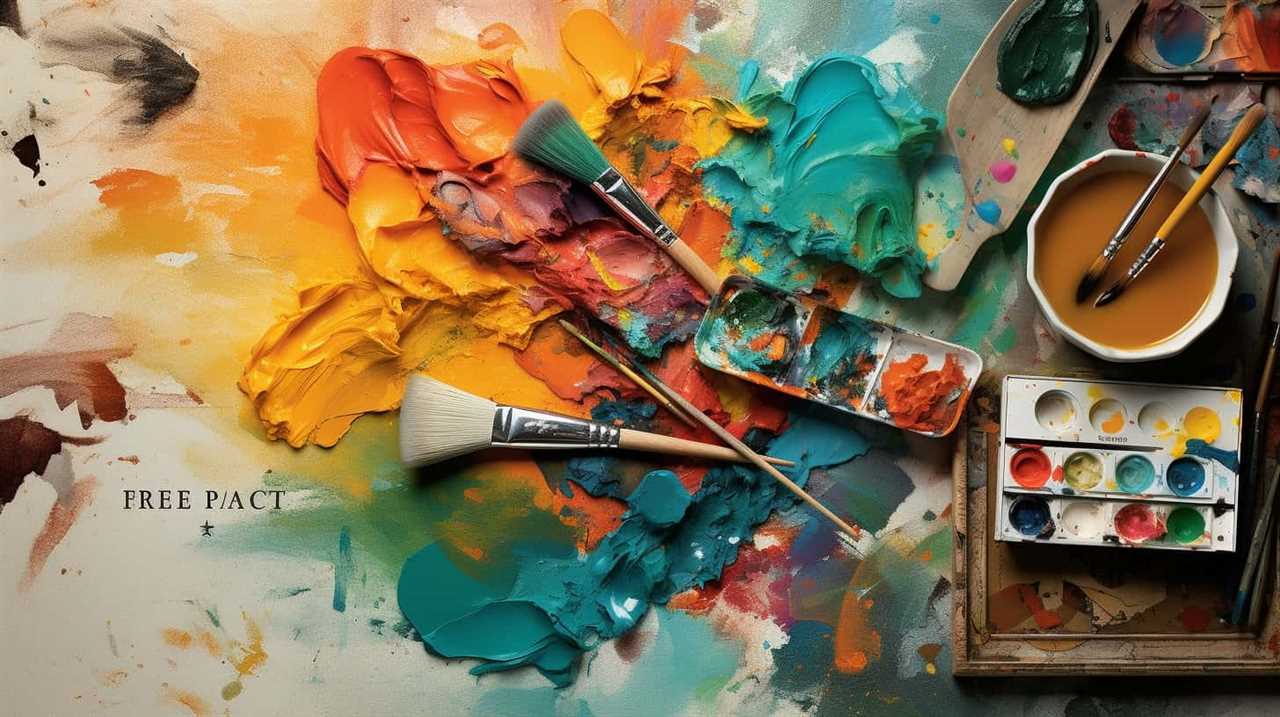
Engaging in creative outlets allows you to tap into your innermost thoughts and emotions, providing a sense of release and relief. It can also serve as a tool for personal growth, as you develop new skills and explore different mediums.
Through art, you can gain a deeper understanding of yourself and the world around you, fostering creativity and innovation in all aspects of your life.
Art Therapy Techniques
Integrate art into your self-care practices for well-being by exploring various art therapy techniques. Art therapy benefits both your mental and emotional well-being, allowing you to express yourself creatively and gain insights into your inner world. Here are three art therapy techniques that can enhance your self-growth and promote a sense of well-being:
- Mindful Art: Engage in the process of creating art mindfully, focusing on the present moment and allowing your thoughts and emotions to flow onto the canvas. This technique promotes self-awareness and can help you manage stress and anxiety.
- Collage Therapy: Create collages using images, words, and materials that resonate with you. This technique allows you to explore your subconscious mind and can uncover hidden emotions or desires. It offers a visual representation of your inner world and can assist in self-reflection and personal growth.
- Mandala Creation: Design and color mandalas, circular patterns that represent wholeness and balance. This technique promotes relaxation, concentration, and self-expression. Creating mandalas can help you find inner peace, increase self-confidence, and tap into your intuition.
Frequently Asked Questions
How Can Artistic Expression Contribute to Personal Growth?
Artistic expression can help you overcome obstacles and develop creativity. By engaging in various art forms, you can explore new perspectives, express emotions, and challenge yourself to think outside the box. It’s a transformative journey of self-discovery and personal growth.
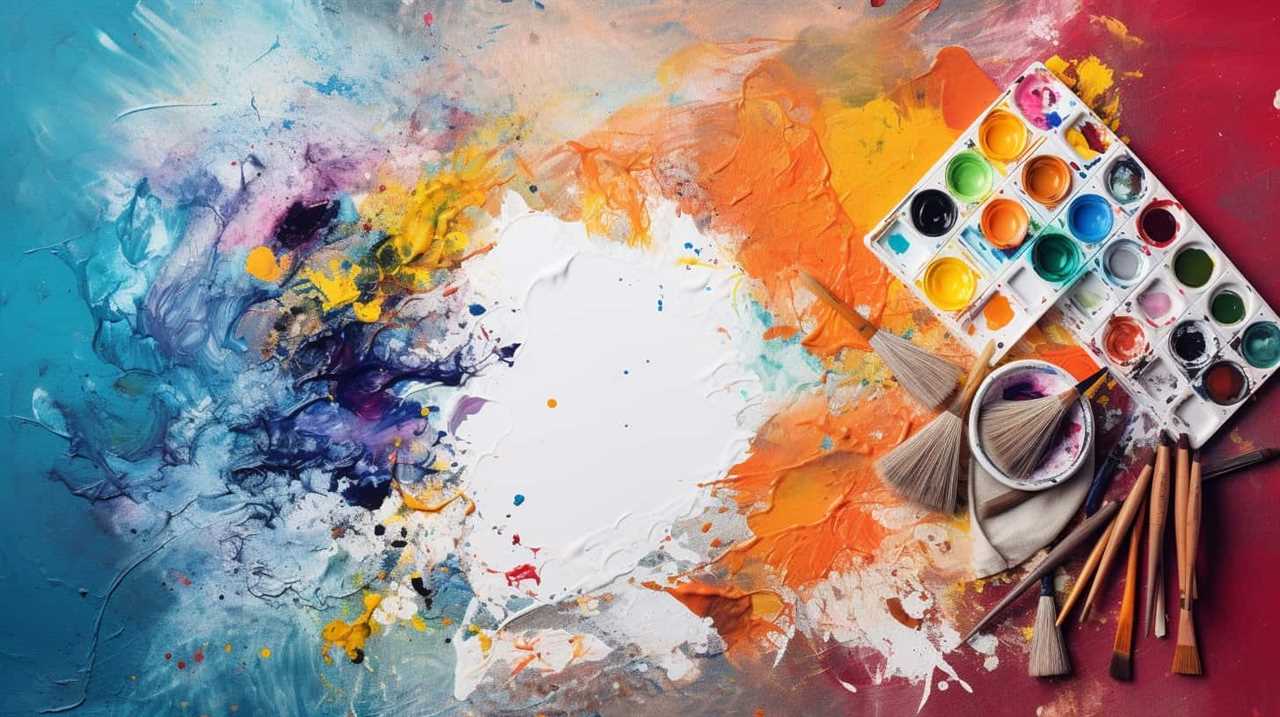
What Are Some Different Art Forms That Can Be Used for Self-Expression?
Looking to express yourself? Try digital art for a tech-savvy twist or dive into performance art for a thrilling experience. These art forms offer unique ways to explore and grow through self-expression. Let your creativity soar!
How Can Art Help in Overcoming Fear and Inhibitions?
Art can help you overcome fear and inhibitions by providing a safe space for self-expression. Through artistic exploration, you can confront and conquer your fears, gaining confidence and a deeper understanding of yourself in the process. Art empowers personal growth and transformation.
What Are Some Ways to Cultivate Mindfulness Through Artistic Activities?
To cultivate mindfulness through artistic activities, you can start by immersing yourself in the creative process. Engage your senses, focus on the present moment, and let the art guide your thoughts and emotions. Let your creativity flow and find peace within.
How Can Art Be Used as a Therapeutic Outlet?
Art can be a therapeutic outlet and a powerful tool for emotional healing. Through creative expression, you can explore and process your emotions, finding comfort and release in the process. Let art be your guide to self-discovery and growth.

Conclusion
Through artistic expression, you have the power to unlock your true potential and embark on a journey of self-growth. By embracing different art forms, overcoming fears, and cultivating mindfulness, you can enhance your emotional intelligence, build resilience, and foster personal growth.
Integrating art into your self-care practices won’t only promote your well-being but also add depth and complexity to your life. So, let your creativity soar and continue to explore the limitless possibilities that artistic expression has to offer.
Fritz is a writer whose humor and wit infuse life into words. His creativity, combined with a profound love for the English language, makes him a unique voice at afterQuotes. Fritz’s engagement with books, culture, and social media adds depth to his contributions, making them resonate with our diverse audience.


